Project Description
One of the nation’s largest telecommunications and media companies, whose portfolio of operations comprises a full suite of advanced digital television, voice and high-speed Internet services – as well as valuable local media and programming properties – needed to ensure that each representative knows as much as possible about the customer, especially about their service status and issues.
With more than 4,000 customer-facing employees across a single major metropolitan area, ensuring that each employee provides excellent service is elemental.
And to do that requires serious ease-of-use. Combining different communication channels and according to the needs of reps in call centers, front-line employees in branded storefronts and installers and service technicians in the field demands both technical virtuosity and business acumen.
The first challenge was to clearly present all relevant information which was largely from data sources previously unavailable due to their volume and velocity. This included near-real-time system health and a log of the most recent exceptions (e.g., no video signal). The presentation of this data had to be clear and within a framework that would accommodate more and newer types of data as the business evolved. This required working closely with the product owners of existing computer telephony integration (CTI) applications, which already connect the reps with either the client’s ERP application, Cable data, or their primary CRM.
Presenting this new 360º view within a reasonable time frame to each of the reps was the next challenge. The system had to accommodate as many as nine hundred customer-facing personnel per shift. In the most common use case, a customer service rep in a call center handling in-bound calls would need to see this consolidated view of a customer within seconds of the Genesys automated call director (ACD) issuing a screen popup, announcing the next caller’s details.
Each of the customer-facing teams employed a different combination of device and software that was specifically appropriate to their role, and furthermore posed an implementation challenge. Most reps run Microsoft Windows desktop applications from the office. The field technician, including those who work on external infrastructure (e.g., poles and vaults) and those that work in customers’ homes, use two different types of portable devices each customized for their respective roles.
In addition, high-speed and high-volume data was responsible for the greatest change in the organization’s practices and policies. When you have over four million devices connected to your content delivery network, you also have to manage status data arriving into your servers at about one-hundred-fifty thousand data points per minute. The business requirement called for two years of interactions on-hand, requiring terabytes of data to be processed and stored. That’s two out of the original three Big Data “V’s”: velocity and volume. The final “V”, variety, is driven by the business units’ needs to support not just numbers but also unstructured text, ranging from long work log details written in prose to customer interactions on social media (e.g., Twitter). Clearly, this was a Big Data problem.
Define. Design. Deliver. is at the heart of our success. Each client engagement begins with defining the strategy and roadmap, and gathering the requirements through active listening, model building, and high-level planning. A solid definition transforms designs from ordinary to exceptional, combining engineering excellence with user-centric aesthetics.
With a great design in hand, the delivery phase becomes a matter of craftsmanship and hard work. These methods and techniques were essential to a successful engagement as we were able to support our clients’ own software development standards, a combination of agile and waterfall, to ensure we weren’t trying to simultaneously deliver a new solution, and implement process modifications.
A key finding during this phase was that an End-to-End Case Management platform opposed to a single-purpose application was warranted. This was driven by the understanding that once users across the organization learned of the new types, volume, and timeliness of data available (i.e., near-real-time vs. as of the end of the prior business day), additional applications tailored to a particular business need would be requested.
Some of the tasks required to enable such a platform include:
- Identifying the data available
- Identifying the best source for each data element when multiple sources were available
- Analyzing the frequency of updates so that information is aligned as best as possible
- Determining how to best handle unaligned data
- Presenting useful information to reps when the data feeds were incomplete
- Prototyping different visualizations
- Creating a solution with a broad range of interaction types and conditions
Historically, customer-facing personnel must carefully balance their time and attention between listening to a client and getting additional detail from internal systems. By using easier to digest yet more informative visualizations, we are able to keep the reps’ attention on the customer by eliminating the need for them to navigate through multiple screens.
Various technologies were used to construct the solution, including:
- Apache Tomcat
- Unix shell scripts
- R (for dealing with atomic and unstructured data sets)
- MongoDB (for storing JSON)
- Hadoop and HBase for data lake support
- Oracle 12c
A key part of the solution was the role of the data lake. A relatively new concept, a data lake is a reservoir into which data is placed – often file-based – but not necessarily structured for application access. Key-value technologies, such as Hadoop, support data lakes by making it easy to fill the data lake with content. They are not, however, designed to provide easy, reliable or provably-complete access to information. This is why contemporary enterprise-class relational database products, such as Oracle 12c, are an essential part of analytics solutions today.
Chateaux brought together experts in Big Data, unstructured data, CRM and robust and scalable distributed information systems to create the End-to-End Case Management solution. It consists of parallelized polling of and pulling from multiple data sources via the Case Monitor, and the Ribbon application which presents information to the reps in a clear, quick and visually-compelling manner.
The solution also had to handle interruptions in filling the data lake. When the data lake pipes start flowing again, organizations are literally flooded with hundreds of thousands of rows per minute. It is vital to avoid expending time to stage this data using traditional means. To this end, we developed and implemented adaptive algorithms which allow us to restore near-real-time access as we are backfilling the missing data. This is accomplished transparently to the users.
When a customer makes a call, emails, walks-in, or tweets, a clear view of their environmental status and interactions is presented to the rep by the time they greet the customer. With one click they can drill-down into more complex and unstructured data, and just as easily return to the main view.
Although the solution relies on robust data feeds and complex logic, information is portrayed in a simple and user friendly manner, allowing customer interaction information to be consumed with minimal ramp-up time. Moreover, the customer has a very positive experience since they are not required to (perhaps, for the third time) explain their circumstance to a customer service representative.

I truly appreciate the professionalism and expertise Chateaux brings to the table, in addition to the excellent work ethic. It’s always a great pleasure to be working with a team of such bright individuals!





